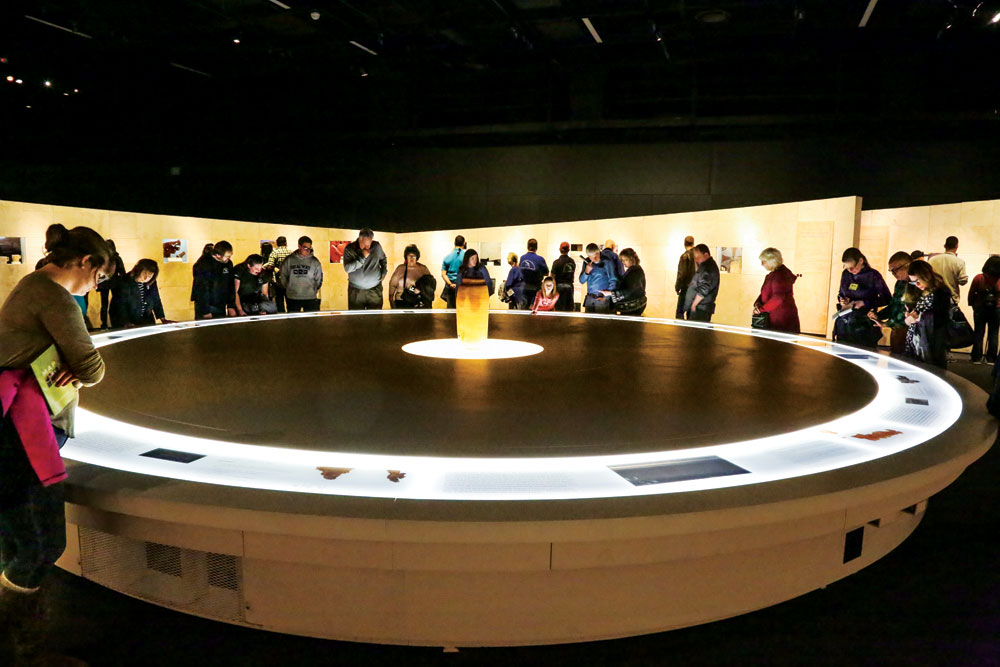
Ten scrolls are displayed under half-light in a large circular display case, along with their English translations.
“Many of the people who are coming to this exhibition aren’t our regular museum goers. This is a once-in-a-lifetime experience,” says Robert Payo, an educator at Dead Sea Scrolls, at the Denver Museum of Nature and Science through Sept. 3. “People’s interest varies from a fascination with the crazy discovery story and miraculous preservation, to the scrolls’ direct connection with Islam, Judaism and Christianity.”
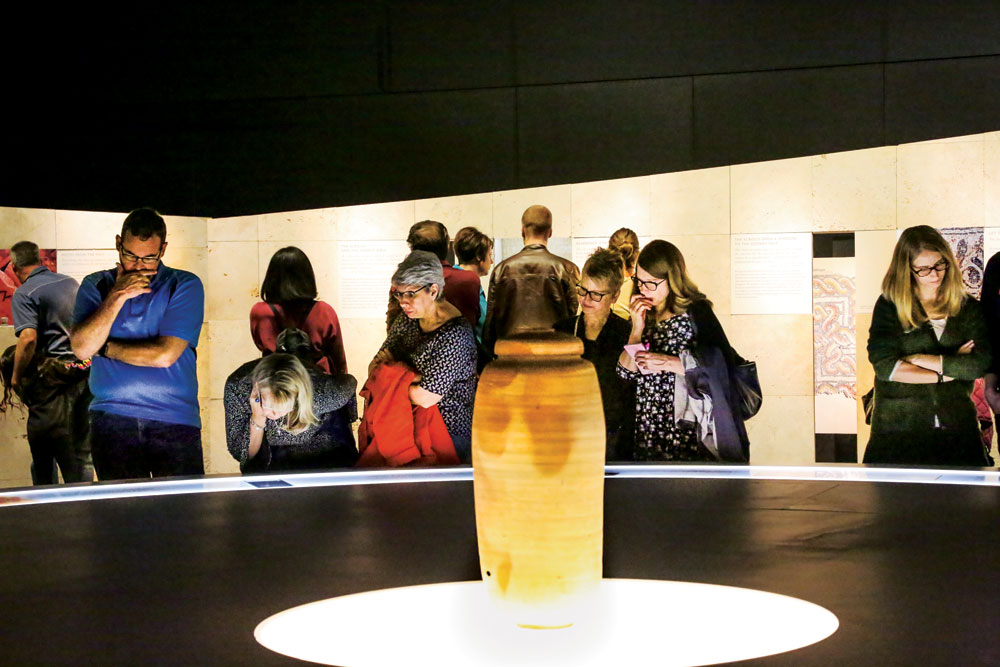
Some of the scrolls were found in clay jars, several to a jar.
The Dead Sea Scrolls, ancient manuscripts that include the oldest known biblical documents dating back over 2,000 years, were discovered in 1947 near the Dead Sea in the Middle East. The scrolls are a record of customs and beliefs in ancient Israel, written between 200 BCE (before common era) and 70 CE (common era) in ancient Hebrew, Aramaic and Greek. “The scrolls let us piece together the everyday lives, as well as the religious lives, of our common ancestors,” Payo said. “It’s miraculous the scrolls survived for more than 2,000 years, that they weren’t eaten by animals or destroyed by weather.”
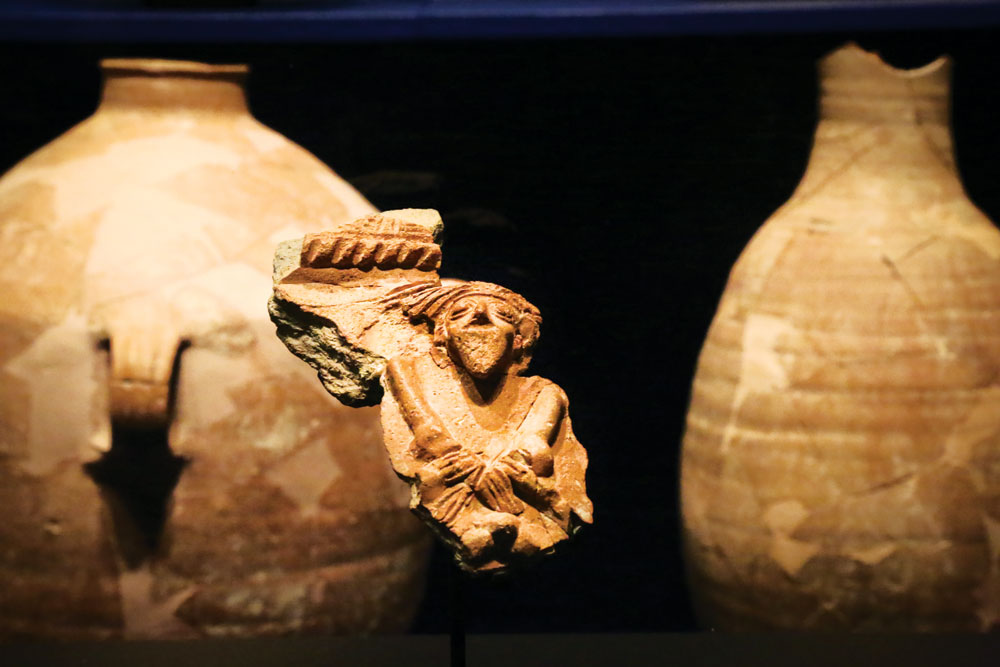
Figurine of a man with a pointed beard, circa 1000 BCE, uncovered in Jerusalem. His hands are tied in front of him; perhaps he is a prisoner, or he may be carrying an animal on his shoulders.

A document fragment never displayed before is a quote from Leviticus 15 about cleanliness for the health of the community.

Actor/educator Olivia Downs greets visitors to the exhibition with a live theater performance about the discovery of the scrolls in clay jars in caves near the Dead Sea.
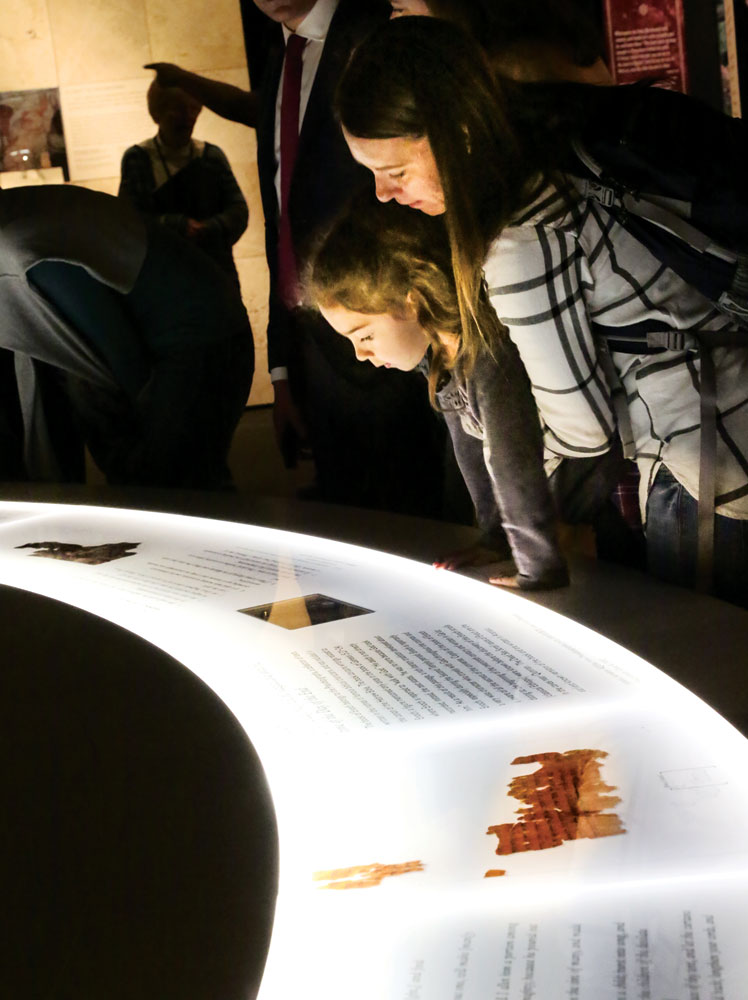
The Dead Sea Scrolls were found in desert caves in the West Bank of the Jordan River between 1947 and 1956. The first scrolls were discovered by young Bedouin goat herders who climbed into a cave, perhaps in search of a stray goat. “It was dark, but when I could see before me, there were about 10 jars in the cave on both sides,” said Muhammed edh-Dhib, one of the goatherders, speaking in Arabic in a 1961 interview. “There were three manuscripts in one jar only. Two of them were rolled in cloth, and the other was not.”
Over the next nine years, archaeologists and Bedouins searched the surrounding caves. After extensive excavation, more than 900 remarkably preserved scrolls were recovered, leading to decades of scrutiny, preservation and debate.
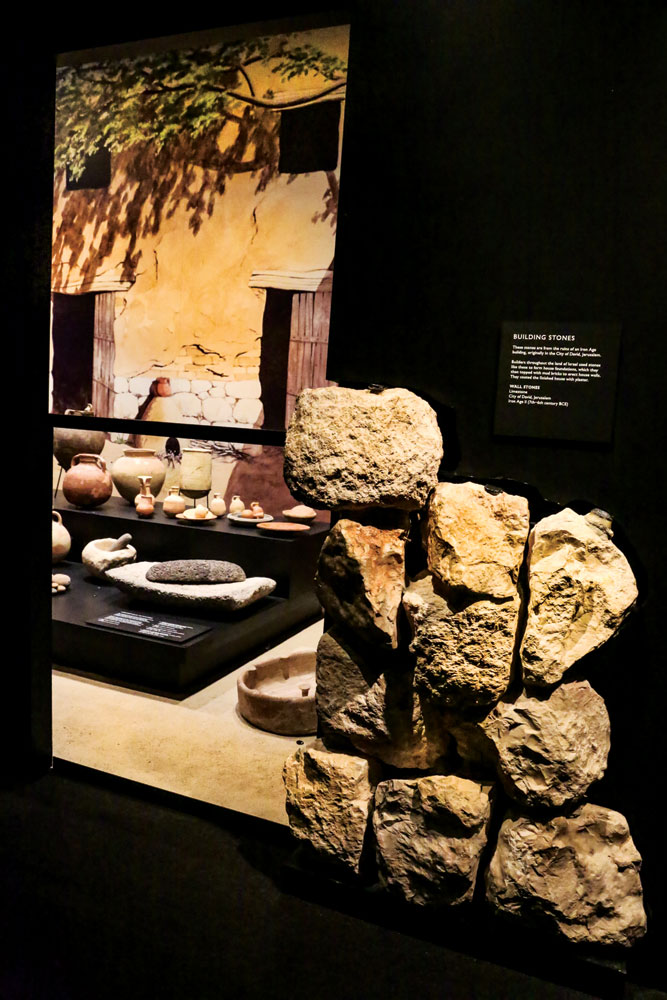
The exhibition places the scrolls in context by including 600 artifacts from the ancient Middle East, including inscriptions and seals, weapons, stone carvings, terra cotta figurines, remains of religious symbols, coins, shoes, textiles, mosaics, ceramics and jewelry.
“Most of the scrolls were written on parchment—goat or calf skin—and some are on papyrus [from plant material],” said Payo. “On some of them you can see where they were stitched together. They survived for 2,000 years because the caves were dry, hot and dark.”
Ten scrolls are on display. Due to strict preservation requirements, 10 different scrolls will arrive halfway through the run to replace the 10 initial scrolls. “After being on display, they are returned to Israel and placed in complete darkness for at least five years,” Payo said.
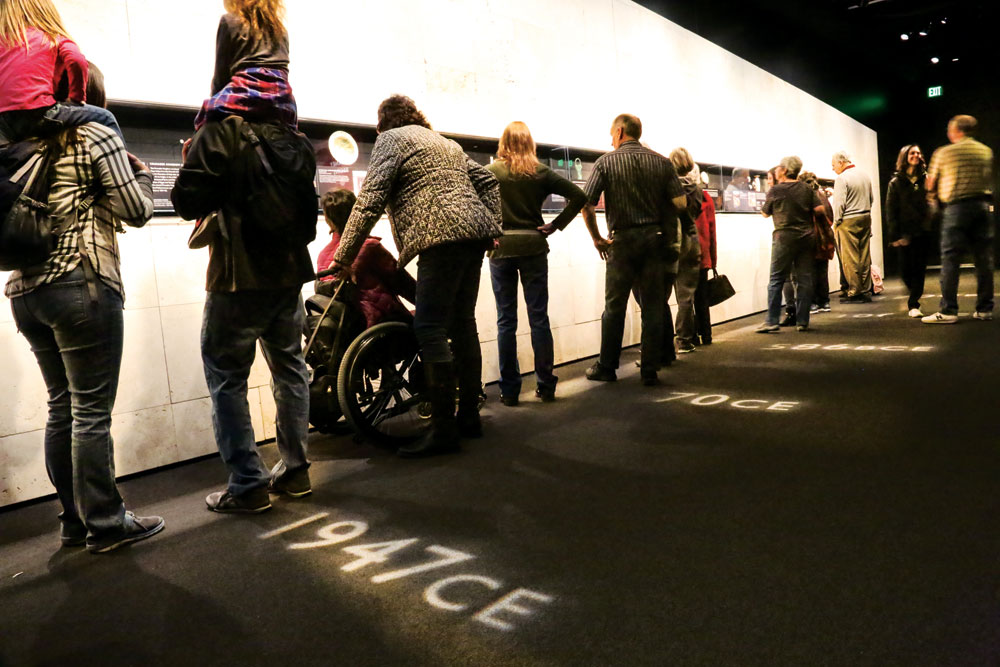
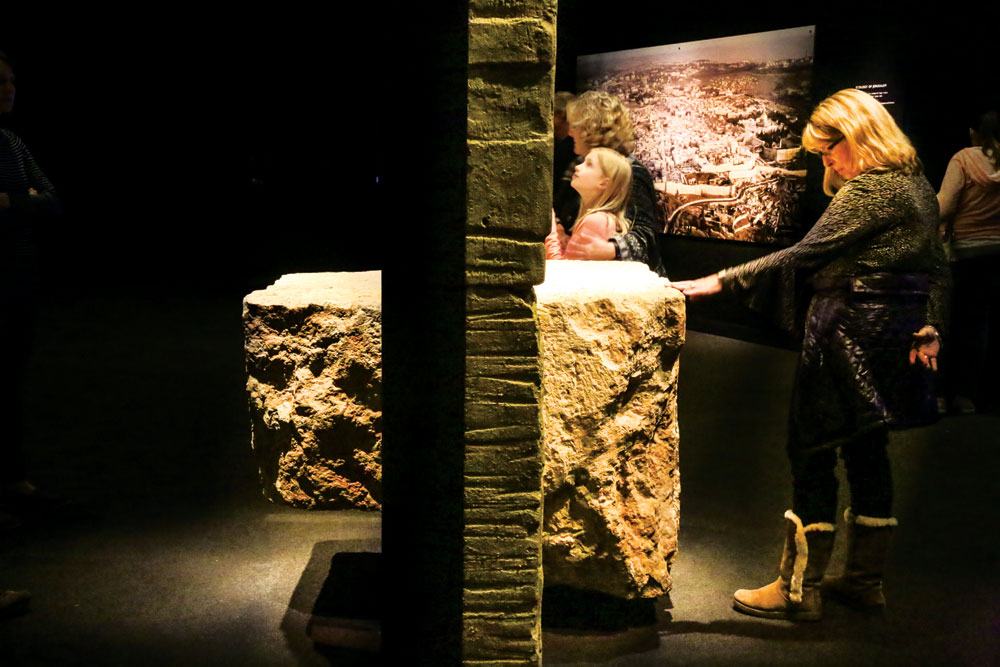
The origin of the scrolls is a subject of debate. “One theory is they were written by the Essenes, a monastic sect. They hid the documents in the caves 20 miles from Jerusalem because no one went there, to keep them from being destroyed by invaders.
“Jerusalem was conquered 40 times, yet it’s still there, while other cities like Babylon are gone. The Jews are still there, with many of the same traditions they observed thousands of years ago. Why? Because their history and traditions were written down.”
In addition to biblical writings, the scrolls also provide commentary on the Bible and everyday religious practices, including ritual bathing and sacrifices. Documents pertaining to everyday life have also been found, including a land lease agreement among four farmers that is signed by each of the four.
The exhibition places the scrolls in context by including 600 artifacts from the ancient Middle East, including inscriptions and seals, weapons, stone carvings, terra cotta figurines, remains of religious symbols, coins, shoes, textiles, mosaics, ceramics and jewelry. “Combining the archaeological record of objects with the writings leads us to some interesting discoveries,” said Payo, pointing to a case of fertility figurines among the religious artifacts. “The ancient Jews were monotheistic [believed in one God], but also kept figurines representing the older religions. They co-existed in everyday life.”
For more information, see dmns.org/dead-sea-scrolls/.




0 Comments